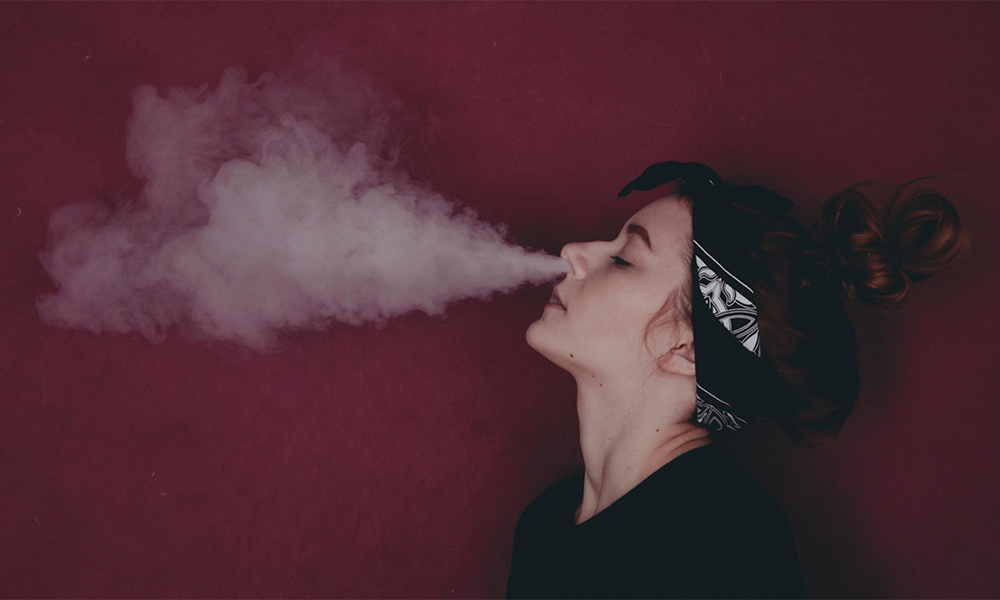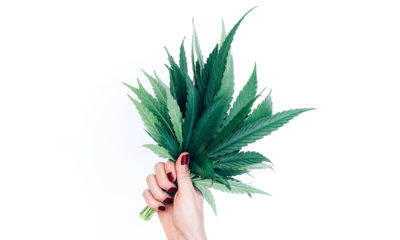
Politics
3 Worrying Cannabis Trends to Watch in 2020
Political space for cannabis is generally on the upswing, but there are some intersecting trends that advocates will need to keep a sharp eye on in the coming year.
Amid an overall trend of progress for cannabis freedom, there are a few worrying tendencies that industry and activists alike will need to be vigilant about in 2020.
These concern both the actual shape of the legal industry as it unfolds, and the dangers of a prohibitionist backlash against it. It looks likely that corporate cannabis will increase pressure on independent producers, while prohibitionists will try to leverage the vaping health scare for anti-cannabis propaganda. And the cannabis industry’s own terminology may be actually adding to the confusion.
1) The Growing Power of Corporate Cannabis
The news that CBD products will be arriving at Walgreens and CVS drugstores can be seen as further progress for the normalization of cannabis. But cannabis can also be subject to the same abuses as any other commodity in the legal economy — and the increasing elite corporate control of the plant is obvious.
Despite legal restrictions due to high-THC cannabis remaining illegal under U.S. federal law, strains are being patented. Strains that were long a part of the genetic commons are at risk of being privatized. And independent growers using heirloom seed are at risk of being marginalized in the pricey niche market of “craft cannabis.”
This trend is especially obvious in Canada, where licensed producers are pushing out independent growers and home-growers. Dispensaries which had been operating under a legal “gray zone” in Toronto and Vancouver are being raided and shut down, supplanted by a smaller number of dispensaries licensed under the regulatory regime put in place with legalization last October. It’s true that many “gray-zone” dispensaries have been re-opening, but authorities in Toronto recently took an unsubtle step to prevent this: building big cement-brick barriers between the raided storefronts and the sidewalks. This is certainly not what we expected “legalization” to look like.
Under the Canadian regulations, “craft cannabis” producers do have a place — but they must sell to one of the big licensed producers that serve as intermediaries to the retail outlets. This means they are effectively prohibited from acting as independent operators.
Amid all this, two provinces have actually sought to outlaw home cultivation, essentially forcing consumers to buy corporate cannabis: Quebec and Manitoba. In Quebec, the ban was thankfully overturned by the provincial courts in September. But the one in Manitoba still stands. And in what seems almost like a revenge move, shortly after the overturn of the homegrown ban the Quebec government moved to raise the legal age of cannabis consumption from 18 to 21. The new law is to take effect Jan. 1.
While many activists and advocates anticipate legal cannabis coming to America soon, it’s important that we look at Canada as a model and take steps to protect small farmers.
2) The Prohibitionist Exploitation of the Vape Scare
The vaping-related health scare, which has now claimed some 50 lives across the United States, is obviously a very real and urgent concern. And it is just as obviously providing a ripe atmosphere for exploitation by anti-cannabis advocates that want to put the genie of legal cannabis back in the proverbial bottle — logic and rationality be damned.
A recent case in point is a Philadelphia Inquirer article of Dec. 27, under the lurid headline, “For young users, marijuana can be a dangerous game.” It states: “In this year’s mysterious rash of vaping-related lung injuries… many involved vaping THC products. While the CDC has identified vitamin E acetate as ‘a chemical of concern’ in these cases, it’s just one of many substances present in vaping oils and liquids. The CDC has said the mystery of these illnesses is far from solved and has recommended that people not use any THC-containing e-cigarette products.”
Yet “marijuana” is not an “e-cigarette product,” and it does not contain vitamin E acetate or any of the other unnamed “substances” found in vaping oils and liquids. Contrary to what is implied by the headline, herbaceous cannabis flower is one of the safest ways to consume cannabis, particularly when it comes from a regulated dispensary and has been tested for pesticides, molds and other contaminants. Indeed, people are turning to illegal vape pens in states where cannabis prohibition still reigns precisely because safely tested herbaceous flower is not available.
New York’s Gov. Andrew Cuomo contributed to the confusion in an embarrassing September interview with CNBC, in which he was doggedly questioned on whether the wave of vaping-related illness had made him reconsider pursuing cannabis legalization. “No,” he replied — but quickly added that his administration is “not in favor of smoking marijuana,” and that there are “ways to get THC without smoking marijuana.”
Yet “smoking marijuana” (or vaping marijuana) is the safer alternative to vaping extracts and especially to vaping from an illict-market vape-pen.
However, logic might win out in the end. Take Massachusetts: In September, Gov. Charlie Baker announced that the state would ban the sale of flavored tobacco and vape products. Cannabis advocates pushed back that there was nothing inherently dangerous in a cannabis vape, and in December, the state allowed the vape ban to end. The smart solution: those cannabis vapes would have to pass additional testing to prove they did not contain vitamin E acetate.
3) The Ongoing Semantic Confusion Between ‘Cannabis’ & ‘Marijuana’
The uproar over cannabis vapes brings us to another worrying problem facing the cannabis industry: the need for more education on what exactly “cannabis” means.
Unfortunately, the terminology increasingly favored by the cannabis industry and advocacy community is also contributing the confused intellectual climate. Under the new dogma, use of the word “marijuana” is increasingly verboten, either because it harkens back to the racism of Harry Anslinger or because it helps aid the “normalization” cause to refer to the plant by its scientific name.
Meanwhile, the word “cannabis” is becoming a catch-all for any products derived from cannabis — including the extracts and oils in vape pens and including hemp products that contain less than 0.3% THC. As a means of eroding the stigma, this is obviously counter-productive — because it blurs the distinction between a cured flower and a refined extract, and the distinction between a plant that is federally legal and one that isn’t. It makes rhetorical booby-traps like the one Cuomo blundered into all the more effective.
If the word “marijuana” is to be erased from our vocabulary, then there must be another one to denote dried and cured cannabis flower, typically that containing enough THC for a psychoactive effect. Using the word “cannabis” in a sweeping and imprecise way thickens the cloud of obfuscation around the whole question, and ultimately abets the forces of cultural backlash.
In my opinion, rejecting the word “marijuana” is in some ways a capitulation to the stigma — and a capitulation to racism, as that word is associated with the stigma precisely because it emphasizes the plant’s Mexican roots in North America. Anti-Mexican xenophobia was deftly exploited in the prohibitionist propaganda campaign of the “Reefer Madness” era in the 1930s. And given the current climate in this country, accepting the stigmatization of something (whether a word or a plant) because of its Mexican origins holds obvious political dangers.
In 2020, it might be time to say it loud: “I smoke marijuana and I’m proud!”
TELL US, what do you think will happen to cannabis in 2020?























